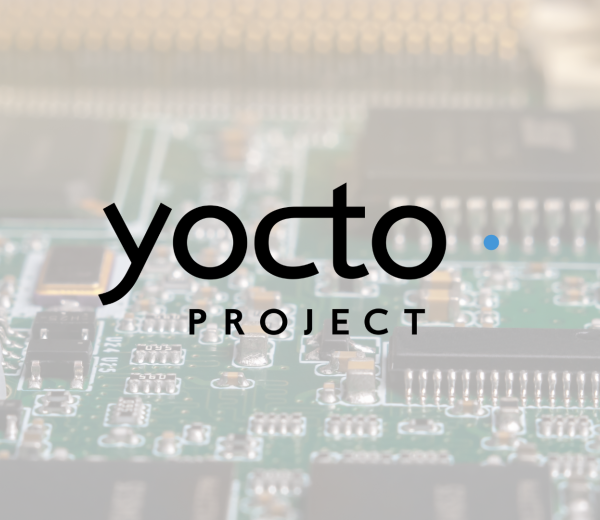

Reading time
3 Minutes
Published
Why Yocto? Building Custom Embedded Linux Systems Without Pain
Insight in Brief
The development of embedded Linux systems often starts with high expectations and ends in a maze of incompatibilities, configuration headaches, and maintenance burdens. Standard Linux distributions often do not offer the necessary flexibility when it comes to special hardware, increased security requirements or long-term maintainability.
This is where the Yocto Project comes in. For engineering teams developing industrial or medical devices, Yocto provides a structured, scalable approach to building fully customized, production-ready Linux systems, without the overhead of developing an own Linux operating system from scratch.
This article covers the following topics:
- Why Yocto is a build system, not a Linux distribution—and how that distinction enables fully customized embedded systems
- How Yocto supports long-term maintainability, reproducibility, and hardware independence
- The role of layered architecture and version control in meeting the needs of regulated environments
- Where Yocto reduces complexity in hardware-software integration for embedded projects
- How IMT applies Yocto to move from the prototype phase to serial production efficiently - particularly in industrial and medical device development
Introduction
Selecting an embedded Linux strategy is often one of the first, and most consequential, decisions in a product's software architecture. Off-the-shelf distributions like Debian or Ubuntu offer convenience, but they’re seldom viable beyond prototyping for systems with tight integration needs, security concerns, or regulatory constraints. For embedded systems that demand control over every layer, from bootloader to user space, Yocto offers a robust alternative.
Yocto’s appeal lies not in simplicity but in precision. It allows developers to build exactly the Linux system they need, no more, no less. At IMT, we routinely use Yocto in the development of long-lifecycle devices where configuration transparency, package reproducibility, and update control are non-negotiable.
1. Yocto Is a Build System, Not a Distribution
Unlike prepackaged Linux distributions, Yocto is a meta-distribution. It doesn't provide a complete OS out of the box but instead enables developers to define one through a structured build environment. The benefit: full control over system components, versions, dependencies, and footprint. Additionally, measures can be taken to ensure that no components are integrated that could be problematic in terms of licensing (e.g. having to publish the complete source code).
2. Layered Architecture for Scalability and Maintenance
Yocto projects are organized into layers, modular collections of configuration, recipes, and metadata. This design enables clean separation between vendor BSPs, middleware, and application-specific logic.
For engineering teams, this means:
- Easier integration of board support packages (BSPs) from SoC vendors.
- Isolation of proprietary or customer-specific code.
- Reuse across multiple products and projects.
3. Reproducibility and Compliance-Ready
Yocto’s deterministic builds ensure that identical source inputs produce identical binaries, a critical requirement in regulated industries.
Support for Software Bill of Materials (SBOMs), licensing audits, and reproducibility makes Yocto a natural fit for medical device and industrial product development, where traceability and certification readiness are key.
4. Long-Term Support and Security Lifecycle Management
Commercial hardware often outlives mainstream Linux distribution support cycles. With Yocto, teams can pin exact kernel versions, apply security patches selectively, and maintain systems over a decade if required. Using Yocto in conjunction with patch-management and CI/CD systems allows an extension of the operational lifetime of products while keeping attack surfaces minimal.
Pros and Cons of Yocto
|
Pros |
Cons |
|
Full control over build artifacts and system configuration |
Steep learning curve and complex build system |
|
Layered structure supports modular development and code reuse |
Longer setup time compared to general-purpose distributions |
|
Ideal for systems with strict memory, performance, or compliance constraints |
Requires dedicated tooling and build infrastructure |
|
Deterministic builds enhance traceability and certification readiness |
Initial integration of custom hardware (BSPs) may be non-trivial |
|
Facilitates long-term support and update strategies |
Debugging build issues can be time-consuming without Yocto experience |
Yocto is not the right tool for every project, but for applications that require predictability, modularity, and low-level control, its benefits outweigh its complexity. While the cons often stem from inexperience, lack of tooling, or missing infrastructure, these are precisely the areas where IMT brings value.
How IMT Clients Benefit from Yocto-Based Development
Clients from various industries working with IMT benefit from Yocto without needing to master its intricacies themselves.
Key advantages include:
- Faster Time-to-Production: IMT provides pre-built frameworks and proven layer structures tailored to regulated devices.
- Regulatory Readiness: SBOMs, traceable configuration, and reproducibility are built in from the start, supporting IEC 62304 and MDR compliance.
- Reduced Technical Risk: We manage BSP integration, version pinning, security patching, and update mechanisms, ensuring system stability across product lifetimes.
- Tailored Customization: Whether it’s a headless industrial controller or a touchscreen medical interface, IMT delivers lean, purpose-built Linux distributions specific to the application.
- Post-Launch Support: IMT supports clients with long-term lifecycle or maintenance strategies, including secure OTA updates and managed kernel backports.
Summary
Yocto enables teams to build tailored, secure, and maintainable embedded Linux systems. Unlike general-purpose distributions, it offers the depth and modularity required for serious embedded applications. IMT utilizes Yocto to help clients reduce development risk, accelerate certification, and support long product lifecycles, particularly in domains where software and hardware need to evolve in lockstep.
More Expert Blog articles
Discover IMT’s engineering expertise and innovative solutions in our Expert Blog. Gain valuable know-how from our experts and explore technology highlights.








